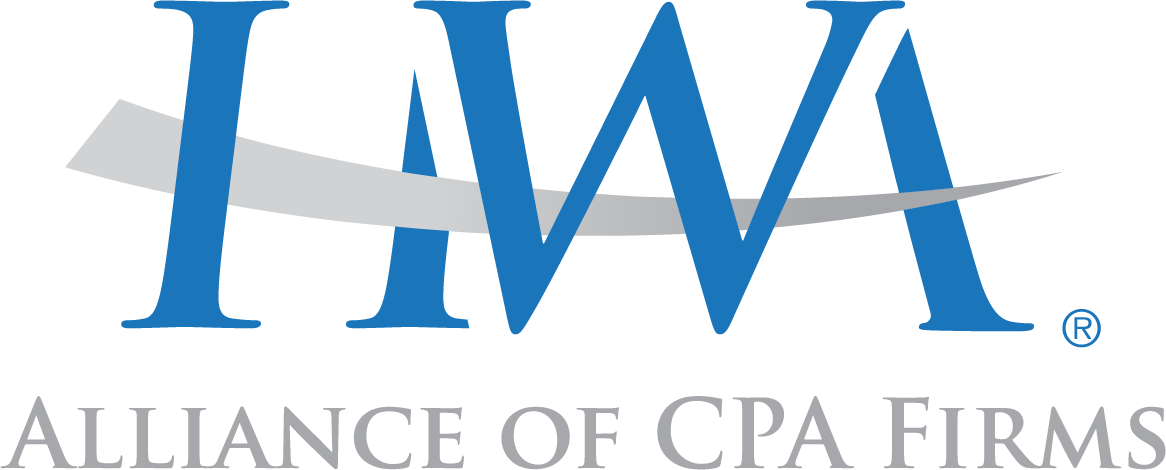A General Overview of ASU 958: A Simple Guide for Non-profits.

ASU 958, also known as Accounting Standards Update 958, is an accounting standard used in the financial reporting practices of non-profits. It is designed to bring transparency, comparability, and accountability to nonprofit financial statements. Albeit an excellent tool for the purpose of building strong financial infrastructure for non-profits, many nonprofits are not fully aware of the significance of ASU 958.
In this article we will give a general overview of ASU 958 and its profound implications on nonprofit organizations. We will discuss a few critical aspects of this industry update and discuss why nonprofits should prioritize learning it. The goal of this article is to empower nonprofits to embrace the knowledge and implementation of ASU 958, enabling them to strengthen their financial management practices, meet stakeholder expectations, and drive positive change in their respective missions.
Why FASB is issuing Accounting Standards Update (the Update).
In the world of financial reporting complexities, Financial Accounting Standards Board (FASB) issued ASU 958 (the Update) to revolutionize financial reporting for nonprofit organizations. The Update’s aim is to enhance financial information’s transparency, comparability, and relevance, providing more straightforward guidance and establishing consistent accounting standards tailored to nonprofits’ unique characteristics and reporting requirements. Before ASU 958, nonprofit accounting standards needed to be more cohesive and complex, leading to inconsistencies. The FASB’s objective is to facilitate accurate and meaningful financial statements, enabling stakeholders to make informed decisions and assess the financial health of nonprofits. ASU 958 aligns with the FASB’s broader mission to enhance the quality and relevance of financial reporting, promoting trust, consistency, and confidence in nonprofit financial statements.
Who Is Affected by the Amendments in This Update?
The amendments in the Update apply to NFPs (nonprofit organizations) that receive contributed nonfinancial assets. These contributions can take various forms, such as gifts, donations, grants, or even donated services. The amendments address the presentation and disclosure of contributed nonfinancial assets, including fixed assets, utilities, supplies, intangible assets, services, and promises of those assets. The impact of ASU 958 extends to several nonprofit entities:
- Charitable Organizations – Foundations, public charities, and private operating foundations are directly impacted by the amendments. These organizations rely on contributions, grants, and fundraising activities to support their charitable missions. The Update introduces changes in the recognition and measurement of revenue from these sources, requiring careful assessment and adaptation of financial reporting practices.
- Educational Institutions – Colleges, universities, and private schools face significant impacts from ASU 958. These institutions rely on various revenue sources, including tuition, scholarships, grants, and endowments. The Update provides specific guidance on revenue recognition for tuition and scholarships, as well as reporting requirements for financial aid and endowment funds, affecting the financial reporting practices of educational organizations.
- Healthcare Organizations – Nonprofit healthcare organizations, such as hospitals, medical centers, and clinics, face substantial impacts from ASU 958. The Update addresses revenue recognition for patient services, reporting requirements for grants and contributions, and expense allocation for healthcare-related activities. These organizations must carefully evaluate and adjust their financial reporting practices to comply with the new standards.
- Religious Organizations – Churches, temples, mosques, and other faith-based nonprofits also fall under the scope of ASU 958. These organizations receive contributions and donations from their members and the community. The Update provides guidance on revenue recognition for these contributions and the classification of net assets, requiring religious organizations to review and update their financial reporting processes.
- Other Nonprofit Entities – A wide range of nonprofit entities, including trade associations, membership organizations, research institutions, cultural organizations, and social service organizations, are impacted by ASU 958. These organizations have unique revenue sources, expense structures, and reporting requirements affected by the amendments. They must assess the specific provisions that apply to their operations and adapt their financial reporting practices accordingly.
It is crucial for all nonprofit organizations to recognize the potential impact of ASU 958 on their financial reporting practices. The amendments introduce changes in revenue recognition, expense classification, net asset presentation, and disclosure requirements. Each organization should carefully evaluate the provisions relevant to its operations, seek guidance from accounting professionals, and ensure compliance with the updated standards. By doing so, nonprofits can maintain transparency, comparability, and accountability in their financial reporting, enabling stakeholders to make informed decisions and assess their financial health and stewardship of resources.
What Are the Main Provisions?
Let’s explore Accounting Standards Update (ASU) 958 key provisions, which revolve around crucial areas of nonprofit financial reporting:
- Net Asset Presentation – Nonprofits will now present two classes of net assets on the statement of financial position instead of three. They will report net assets with donor restrictions, net assets without donor restrictions, and the total net assets. This change streamlines and clarifies the presentation of net assets.
- Statement of Activities – The statement of activities will reflect the change in each of the two classes of net assets mentioned above rather than reporting three classes. However, the total change in net assets for the period will still be reported, ensuring comprehensive reporting.
- Statement of Cash Flows – Nonprofits can continue using direct or indirect methods to report operating cash flows. If the direct method is chosen, the reconciliation (indirect method) is no longer required to be presented or disclosed. This change simplifies the reporting process and reduces unnecessary complexity.
- Enhanced Disclosures – Nonprofits are now required to provide additional disclosures on various aspects, including governing board designations, composition and impact of net assets with donor restrictions, management of liquid resources, availability of financial assets to meet cash needs, expense analysis by classification, cost allocation methods, and disclosures related to underwater endowment funds. These enhanced disclosures provide stakeholders with a more comprehensive understanding of a nonprofit’s financial position and activities.
- Reporting Investment Return – Net investment return should be reported in net of external and direct internal investment expenses. Disclosing these netted expenses is no longer required, reducing the reporting burden while maintaining transparency.
- Expirations of Restrictions – Nonprofits can use the “placed-in-service” approach for reporting the expiration of restrictions on gifts used to acquire or construct long-lived assets. This approach involves reclassifying amounts from net assets with donor restrictions to net assets without donor restrictions for long-lived assets placed in service at the beginning of the adoption period. The option to release the donor-imposed restriction over the asset’s estimated useful life is eliminated. This change streamlines the reporting process for long-lived assets.
These provisions aim to improve nonprofit financial statements’ transparency, comparability, and relevance. By providing more precise guidance and establishing consistent accounting standards, ASU 958 enhances the quality and usefulness of financial information.
Nonprofit organizations are encouraged to carefully review these provisions, assess their impact on their financial reporting practices, and ensure compliance with the updated standards to maintain transparency and accountability in their operations.
What Should Nonprofits Do in Response to the Changes?
Here are some steps nonprofits can take in order to adapt to the new accounting standards:
● Familiarize yourself with the Accounting Standards Update (ASU) and stay updated – Review the ASU document to understand the main provisions and their implications. Additionally, keep an eye out for any future alerts or updates that provide more detailed information regarding the implementation of the ASU. Staying informed will help you effectively navigate the changes.
● Engage in discussions with relevant stakeholders – Initiate discussions about the new ASU with key stakeholders such as your audit committee, board members, and external auditors. Share the details of the ASU and discuss its potential impact on your organization. This collaborative approach will ensure that everyone is informed and prepared for the implementation process.
● Assess the impact and plan for implementation – Work together with your audit committee, board members, and external auditors to evaluate how the ASU will affect your organization’s financial reporting practices. Identify any changes or adjustments that need to be made and develop an implementation plan accordingly. This proactive approach will help streamline the transition and minimize any disruptions.
● Seek professional guidance if needed – If you require further clarification or assistance in understanding the ASU and its implications, consider seeking guidance from accounting professionals or consultants with expertise in nonprofit accounting standards. They can provide valuable insights and help ensure a smooth transition.
By understanding the implications and taking proactive steps to comply with the updated standards, nonprofits can strengthen their financial management practices, meet stakeholder expectations, and drive positive change in their respective missions.
How HWAA Can Help
Navigating the intricacies of accounting standards can be challenging, especially for nonprofit organizations. If you want to ensure accurate and compliant financial statements for your nonprofit organization, HWAA Alliance of CPA Firms, Inc. is here to support you.
At HWAA, we specialize in Financial Statement Preparation services explicitly tailored to meet the needs of nonprofit organizations. HWAA has extensive audit experience in the governmental and not-for-profit industry. With over 80% of our present engagements representing services to not-for-profit agencies funded by federal, state, and local sources, we have a unique perspective on nonprofits’ challenges. We can offer tailored solutions to meet your specific needs.
HWAA stays up to date with the latest regulations and reporting requirements specific to NPOs, ensuring financial statements are fully compliant. The choice of firm for financial services determines the success of an organization. When you choose HWAA you choose meticulous attention to detail, accurate data interpretation, and a commitment to transparency. Contact us today to discuss your nonprofit organization’s financial statement needs.

